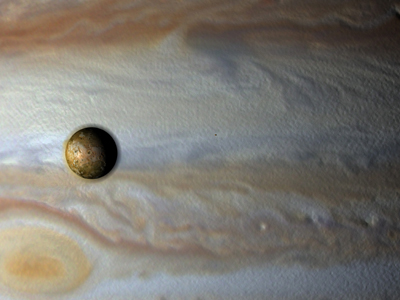
Ask the AI Tutor
Need help with Solar System 01? Ask our AI Tutor!
AI Tutor - Lucy
Connecting with Tutor...
Please wait while we establish connection

The largest planet in our solar system is Jupiter.
Solar System 01
The Solar System is full of planets, moons, and mysteries. From giant gas planets to rocky worlds, it shows how diverse our universe really is.
1 .
The centre of our solar system is .......
Mars
the Earth
the Moon
the Sun
The temperature on the surface of the Sun is about 5,500°C
2 .
Which was the first planet known to have rings?
Jupiter
Pluto
Saturn
Uranus
The particles that make up Saturn’s rings range in size from smaller than a grain of sand to as large as a mountain
3 .
The time it takes the Earth to orbit the Sun is called .......
28 days
a month
a year
10 years
An orbit round the Sun is a path round the Sun
4 .
Which one do artificial satellites NOT do?
Collect information
Remain stationary
Send TV broadcasts
Take photographs
They have to keep moving otherwise they would simply fall back down towards the surface of the Earth and burn up like a meteor as they entered the atmosphere
5 .
We can sometimes see some of the planets because .......
they are a source of light
they are luminous
they reflect light from the Moon
they reflect light from the Sun
They are sometimes out of sight because they are between the Earth and the Sun or on the opposite side of the Sun to Earth
6 .
How many planets are there in our solar system?
7
8
10
11
Some scientists think that Pluto is a planet, however it was reclassified as a dwarf planet in 2005
7 .
How many stars are there in our galaxy?
Hundreds
Millions
Thousands
Billions
They are held in place by gravity and the whole galaxy is slowly rotating because the stars are all orbiting the centre of mass. It takes the Sun about 220 million years to complete one orbit
8 .
What is our solar system a part of?
Constellation
Orion
Mars
Milky Way
The Milky Way is the name given to the galaxy of stars in which the Sun is situated. There are many other galaxies in the universe, some contain more stars than ours and some are smaller
9 .
Which is the largest planet in our solar system?
Earth
Jupiter
Saturn
Uranus
More than 1,300 Earths could fit inside it!
10 .
A satellite is .......
a large object in orbit round a smaller object
a large object in space
a small object in orbit round a larger object
a small object in space
The Moon is a satellite of the Earth
**Unlimited Quizzes Await You! 🚀**
Hey there, quiz champ! 🌟 You've already tackled today's free questions.
Ready for more?
Ready for more?
🔓 Unlock UNLIMITED Quizzes and challenge yourself every day. But that's
not all...
not all...
🔥 As a Subscriber you can join our thrilling "Daily Streak" against other
quizzers. Try to win a coveted spot on our Hall of Fame Page.
quizzers. Try to win a coveted spot on our Hall of Fame Page.
Don't miss out! Join us now and keep the fun rolling. 🎉
**Unlimited Quizzes Await You! 🚀**
Hey there, quiz champ! 🌟 You've already tackled today's free questions. Ready for more?
🔓 Unlock UNLIMITED Quizzes and challenge yourself every day. But that's not all...
🔥 As a Subscriber you can join our thrilling "Daily Streak" against other quizzers. Try to win a coveted spot on our Hall of Fame Page.
Don't miss out! Join us now and keep the fun rolling. 🎉






